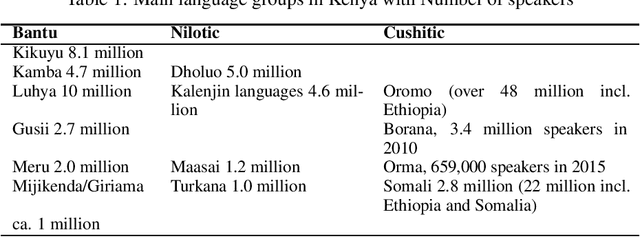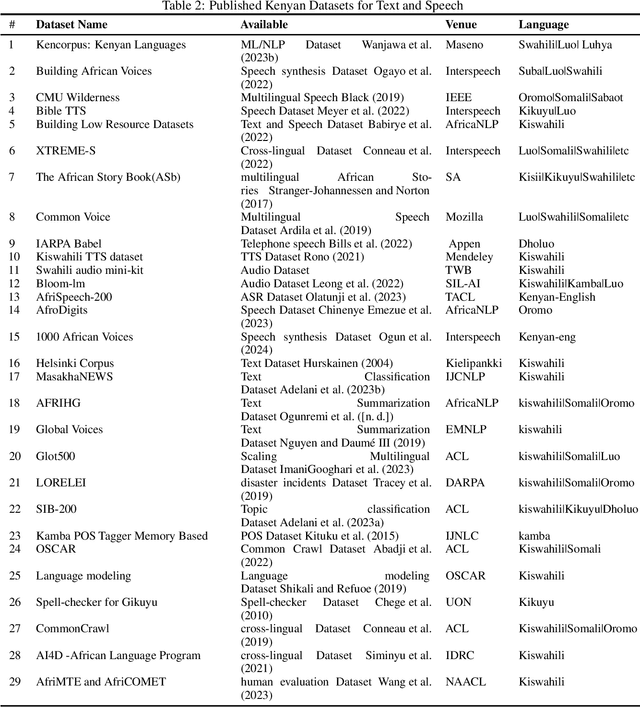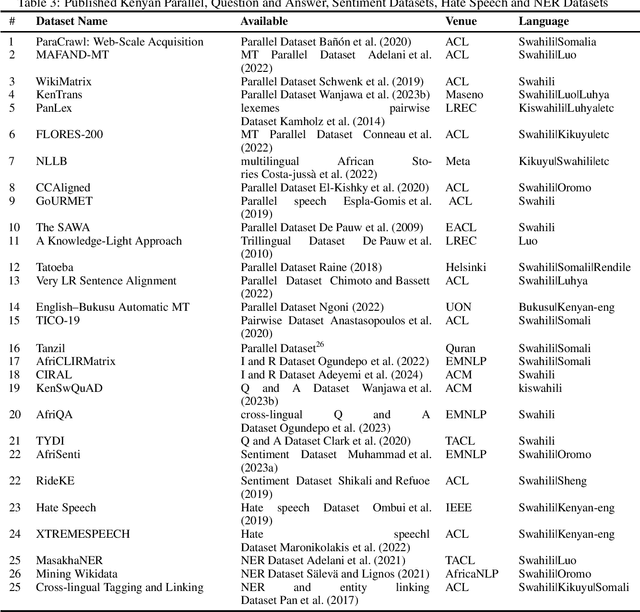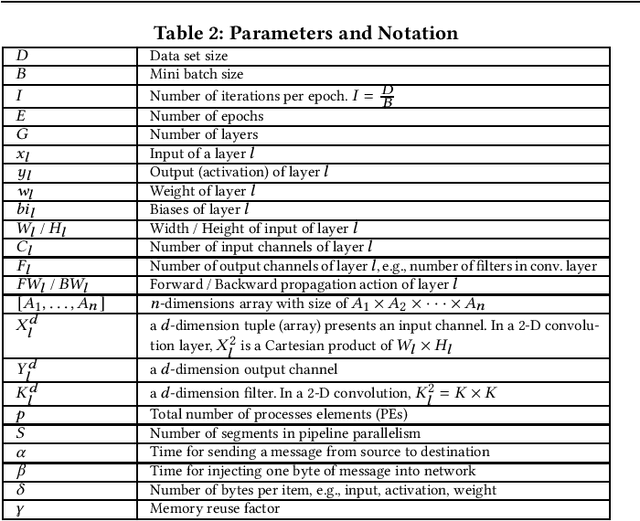Albert Njoroge Kahira
State of NLP in Kenya: A Survey
Oct 13, 2024


Abstract:Kenya, known for its linguistic diversity, faces unique challenges and promising opportunities in advancing Natural Language Processing (NLP) technologies, particularly for its underrepresented indigenous languages. This survey provides a detailed assessment of the current state of NLP in Kenya, emphasizing ongoing efforts in dataset creation, machine translation, sentiment analysis, and speech recognition for local dialects such as Kiswahili, Dholuo, Kikuyu, and Luhya. Despite these advancements, the development of NLP in Kenya remains constrained by limited resources and tools, resulting in the underrepresentation of most indigenous languages in digital spaces. This paper uncovers significant gaps by critically evaluating the available datasets and existing NLP models, most notably the need for large-scale language models and the insufficient digital representation of Indigenous languages. We also analyze key NLP applications: machine translation, information retrieval, and sentiment analysis-examining how they are tailored to address local linguistic needs. Furthermore, the paper explores the governance, policies, and regulations shaping the future of AI and NLP in Kenya and proposes a strategic roadmap to guide future research and development efforts. Our goal is to provide a foundation for accelerating the growth of NLP technologies that meet Kenya's diverse linguistic demands.
AfriQA: Cross-lingual Open-Retrieval Question Answering for African Languages
May 11, 2023



Abstract:African languages have far less in-language content available digitally, making it challenging for question answering systems to satisfy the information needs of users. Cross-lingual open-retrieval question answering (XOR QA) systems -- those that retrieve answer content from other languages while serving people in their native language -- offer a means of filling this gap. To this end, we create AfriQA, the first cross-lingual QA dataset with a focus on African languages. AfriQA includes 12,000+ XOR QA examples across 10 African languages. While previous datasets have focused primarily on languages where cross-lingual QA augments coverage from the target language, AfriQA focuses on languages where cross-lingual answer content is the only high-coverage source of answer content. Because of this, we argue that African languages are one of the most important and realistic use cases for XOR QA. Our experiments demonstrate the poor performance of automatic translation and multilingual retrieval methods. Overall, AfriQA proves challenging for state-of-the-art QA models. We hope that the dataset enables the development of more equitable QA technology.
An Oracle for Guiding Large-Scale Model/Hybrid Parallel Training of Convolutional Neural Networks
Apr 19, 2021



Abstract:Deep Neural Network (DNN) frameworks use distributed training to enable faster time to convergence and alleviate memory capacity limitations when training large models and/or using high dimension inputs. With the steady increase in datasets and model sizes, model/hybrid parallelism is deemed to have an important role in the future of distributed training of DNNs. We analyze the compute, communication, and memory requirements of Convolutional Neural Networks (CNNs) to understand the trade-offs between different parallelism approaches on performance and scalability. We leverage our model-driven analysis to be the basis for an oracle utility which can help in detecting the limitations and bottlenecks of different parallelism approaches at scale. We evaluate the oracle on six parallelization strategies, with four CNN models and multiple datasets (2D and 3D), on up to 1024 GPUs. The results demonstrate that the oracle has an average accuracy of about 86.74% when compared to empirical results, and as high as 97.57% for data parallelism.
 Add to Chrome
Add to Chrome Add to Firefox
Add to Firefox Add to Edge
Add to Edge